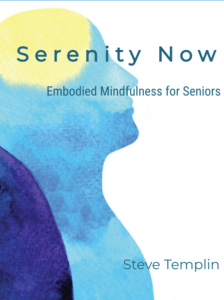The author of Eat, Pray, Love Elizabeth Gilbert recently shared her account of how she dealt with chronic, severe knee pain that hadn’t responded to treatment, natural or otherwise.
She decided to get very quiet and simply ask her knee what it needed. The response that eventually emerged was “Go Faster”. This guidance lead Elizabeth to experiment with more physical activity, using her knee more rather than limiting its use to protect it. Her knee began to heal as she became more active.
Talking to a painful body part may seem a bit unconventional. And increasing the activity of a painful body part may also seem to be counter productive and often times it is.
However, when it comes to chronic pain (pain that lingers for months at a time or longer) striking up a dialogue with the pain can open one to new possibilities for healing.
Chronic pain is often programmed by the brain
Chronic pain often involves an over activation and stimulation of the limbic brain. The limbic brain can be programmed to create or maintain pain anywhere in the body. When this is the case the faulty brain programming needs to be addressed as a priority rather than solely focusing on treating the painful area itself.
In these cases avoiding activity only reinforces the belief that the body part itself, and not the mindbody connection, is solely responsible for the pain. So ‘knowing’ that it’s only my knee keeps me from looking any deeper into myself for an answer.
Dr. John Sarno, M.D. of the NYU Rehabilatative Medicine Department has demonstrated that 95% of chronic back back was a mindbody driven ailment that he calls a MindBody Syndrome, or Tension Myo-neural Syndrome (TMS). A significant part of his treatment strategy is to avoid being overly protective of the painful body part while addressing the stress-related causes of the pain.
Dialoging with your body
In the Somatic Focusing process, that was developed at the University of Chicago in the 1960’s, we often ask a painful emotional or physical feeling, what if anything it wants us to know. This sounds very similar to what Elizabeth Gilbert did.
Having worked with the Focusing process for many years I know that there is a wisdom within us that can respond to such questions. We might refer to this wisdom as intuition, heart intelligence, right brain activity, spirit, or something else. Regardless of what we name this source of guiding wisdom my experience with patients over many years demonstrates that it’s readily available.
The main messasge here is that a lot of pain and other physical symptoms are driven by the mind and brain suggesting that appropriate treatment should involve the mind as well as any other more symptom focused treatments
Chronic pain is incredibly common. Twenty-five million U.S. adults suffer from pain on a daily basis, according to an August report by the National Center for Complementary and Integrative Health, published in the Journal of Pain. Another 40 million adults suffer from severe pain but just not as frequently.
Having options for addressing pain, in addition to or as an alternative to the more conventional approaches, can be empowering.
Here’s a questionnaire that can help in determining if pain or symptoms fall into the MindBody Syndrome classification.
 Steven Templin, D.O.M., Dipl. Ac. specializes in Acupuncture and Limbic Brain Reprogramming to address the roots of chronic pain and illness. He offers a comprehensive mind-body program for addressing the underlying inflammation, toxicities, and stress-induced causes of most pain and illness.
Steven Templin, D.O.M., Dipl. Ac. specializes in Acupuncture and Limbic Brain Reprogramming to address the roots of chronic pain and illness. He offers a comprehensive mind-body program for addressing the underlying inflammation, toxicities, and stress-induced causes of most pain and illness.
He places special emphasis on resolving the stress response and repairing adrenal gland and digestive system function to address the root causes of many common and often difficult to treat illnesses.
He translates emerging research in the fields of Epigenetics, Energy Psychology, and Functional Nutrition into effective practices that you can perform at home.
You can work with Dr. Templin in his Lakeland office, or online. You can visit his website at www.stevetemplin.com and contact him via email at drtemplin@gmail.com.
You can schedule an office visit with Dr. Templin by calling 863-838-2779.

 Steve is a retired Doctor of Oriental Medicine, Acupuncture Physician, and HeartMath Trauma-Sensitive Certified Practitioner with over 35 years of clinical experience in the fields of Energy Medicine, Energy Psychology, and Biofeedback.
Steve is a retired Doctor of Oriental Medicine, Acupuncture Physician, and HeartMath Trauma-Sensitive Certified Practitioner with over 35 years of clinical experience in the fields of Energy Medicine, Energy Psychology, and Biofeedback. 